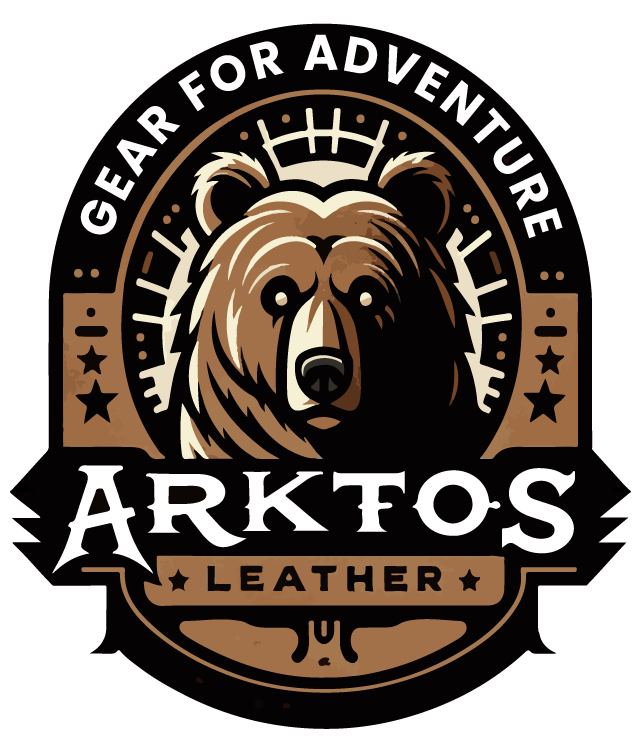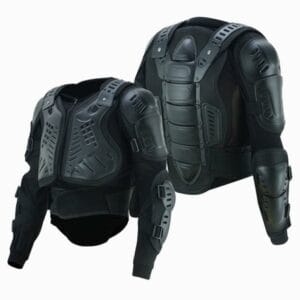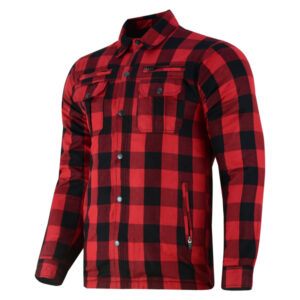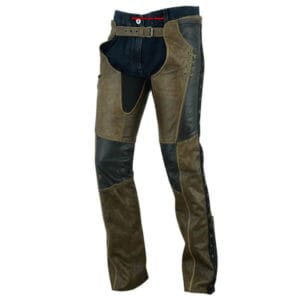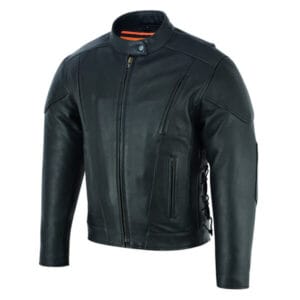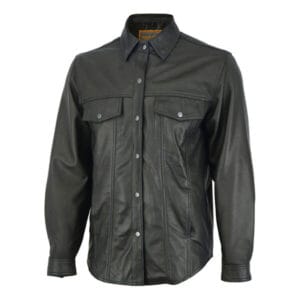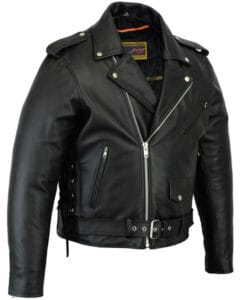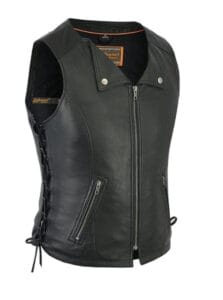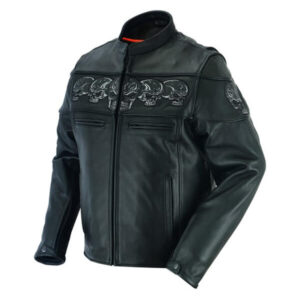In the realm of motorcycle riding, safety is paramount. Motorcycle armor plays a pivotal role in ensuring the safety of riders by providing protection against potential injuries in the event of accidents or collisions.
The Purpose of Motorcycle Armor
The primary purpose of motorcycle armor is to mitigate the severity of injuries sustained in accidents or crashes. By absorbing and dispersing impact forces, armor helps prevent fractures, lacerations, and other traumatic injuries that can occur during motorcycle accidents. Additionally, motorcycle armor enhances rider comfort by offering insulation against weather elements and reducing fatigue on long rides.
Black Full Body Protection Motorcycle Armor
Types of Motorcycle Armor
Body Armor
A. Impact Absorption
Body armor is a critical component of motorcycle protective gear, designed to absorb and dissipate the energy generated during impacts. It typically consists of layers of high-density foam or specialized materials that compress upon impact, reducing the force transmitted to the rider’s body. This type of armor is commonly integrated into motorcycle jackets and suits, offering protection to vital areas such as the chest, back, and shoulders.
B. Abrasion Resistance
In addition to impact protection, body armor also provides abrasion resistance to safeguard riders against road rash and friction injuries in the event of a slide or fall. This is achieved through the use of durable outer shells made from materials like leather, textile, or synthetic fibers such as Kevlar. These materials are chosen for their high tensile strength and abrasion-resistant properties, ensuring that the armor can withstand the forces exerted during a skid or collision with the road surface.
D.O.T. Daytona Flying Aces Cruiser Motorcycle 3/4 Helmet
Helmet
A. Construction Materials
Helmets are arguably the most vital piece of motorcycle armor, providing protection for the rider’s head and brain in the event of a crash. They are constructed from a variety of materials, each offering different levels of impact resistance and weight. Common helmet construction materials include:
- Polycarbonate: Lightweight and affordable, polycarbonate helmets offer good impact protection and are suitable for everyday riding.
- Fiberglass: Fiberglass helmets provide excellent strength-to-weight ratio and are favored by performance-oriented riders for their superior impact absorption properties.
- Carbon Fiber: Considered the pinnacle of helmet materials, carbon fiber helmets offer unmatched strength and rigidity while being exceptionally lightweight. They are often used in high-end racing helmets for maximum protection.
B. Safety Standards
To ensure the effectiveness of motorcycle helmets in protecting riders, various safety standards and certifications have been established worldwide. These standards dictate minimum requirements for impact protection, retention systems, field of vision, and peripheral vision, among other factors. Some of the most widely recognized safety standards for motorcycle helmets include:
- DOT (Department of Transportation): The DOT standard is mandatory for all helmets sold in the United States, ensuring minimum levels of impact protection and peripheral vision.
- ECE (Economic Commission for Europe): The ECE standard is accepted in over 50 countries worldwide and is known for its rigorous testing procedures, including impact absorption, chin strap retention, and field of vision.
- Snell: The Snell Memorial Foundation sets voluntary safety standards for motorcycle helmets, focusing on impact protection and helmet integrity under extreme conditions.
Red Armored Flannel Shirt For Bikers
Understanding Impact Protection
A. Mechanics of Impact
Understanding the mechanics of impact is crucial for comprehending how motorcycle armor protects riders during accidents. When a rider experiences an impact, whether from a collision or a fall, kinetic energy is transferred from the object impacting the rider to their body. This energy can cause severe injuries if not adequately absorbed or dispersed.
1. Energy Absorption
Motorcycle armor, particularly body armor, is designed to absorb this kinetic energy by deforming upon impact. Materials like foam padding or specialized impact-absorbing polymers compress under pressure, converting the kinetic energy into heat and reducing the force transmitted to the rider’s body.
2. Dispersal of Forces
In addition to energy absorption, motorcycle armor helps distribute the forces of impact over a larger area, minimizing the risk of localized injuries. By spreading out the force, armor reduces the pressure exerted on any single point of contact, thereby reducing the likelihood of fractures, contusions, or internal injuries.
Women’s Lightweight Leather Two Tone Motorcycle Hip Set Chaps
B. Importance of Impact Distribution
The importance of impact distribution cannot be overstated when it comes to motorcycle safety. Concentrated forces on specific areas of the body, such as the spine, chest, or head, can result in severe injuries, including spinal cord damage, organ trauma, or traumatic brain injuries.
1. Spinal Protection
Properly designed motorcycle armor, especially back protectors integrated into jackets or standalone spine protectors, helps distribute impact forces across the entire surface area of the back. This prevents the concentration of pressure on the spine, reducing the risk of vertebral fractures or spinal cord injuries in the event of a crash.
2. Chest and Torso Protection
Similarly, armor for the chest and torso plays a critical role in distributing impact forces during crashes. By dispersing the energy over a larger area, chest protectors and armored jackets mitigate the risk of rib fractures, lung injuries, and cardiac trauma, which can occur when the chest cavity absorbs excessive force.
3. Head and Brain Safety
In the case of helmets, impact distribution is paramount for protecting the rider’s head and brain. Helmets are designed to absorb and disperse the energy of impact, preventing skull fractures, concussions, and traumatic brain injuries. The outer shell of the helmet spreads the force of impact over a wide area, while the inner liner absorbs and dissipates the energy, reducing the risk of injury to the brain.
Men’s Adjustable Vented Leather Motorcycle Jacket
Evaluating Abrasion Resistance
A. Material Technologies
Abrasion resistance is a critical factor in motorcycle armor, especially in protecting riders from road rash and friction injuries during slides or falls. Different material technologies offer varying levels of abrasion resistance, each with its own advantages and considerations.
1. Leather
Traditionally, leather has been the go-to material for motorcycle apparel due to its exceptional abrasion resistance and durability. Leather jackets, pants, and suits offer superior protection against road rash and abrasion injuries, making them popular among riders, particularly in racing and high-performance settings.
Leather’s natural properties, including high tensile strength and resistance to tearing, make it an ideal choice for motorcycle armor. Additionally, leather tends to form a protective layer of “grain” upon abrasion, further enhancing its resistance to frictional forces.
2. Textile
In recent years, textile materials have emerged as viable alternatives to leather for motorcycle apparel, offering a combination of abrasion resistance, versatility, and weatherproofing. Advanced textiles such as Cordura and ballistic nylon feature tightly woven fibers that provide excellent tear and abrasion resistance, rivaling that of traditional leather.
Textile motorcycle jackets and pants often incorporate abrasion-resistant panels or reinforcements in key impact zones, such as the shoulders, elbows, knees, and hips. These panels are typically made from high-density fabrics or synthetic materials like Kevlar, which further enhance the protective properties of the garment.
Men’s Black Lightweight Leather Shirt
B. Testing Standards and Certifications
To ensure the abrasion resistance and overall durability of motorcycle armor, various testing standards and certifications have been established within the industry. These standards evaluate the performance of armor materials and garments under simulated abrasive conditions, providing riders with assurance of their protective capabilities.
1. CE Certification
The CE (Conformité Européenne) certification is widely recognized in the motorcycle industry and denotes compliance with European safety standards. CE certification for motorcycle armor assesses factors such as impact protection, abrasion resistance, tear strength, and seam integrity, ensuring that the gear meets minimum safety requirements.
2. EN Standards
Within the CE certification framework, specific EN (European Norm) standards apply to motorcycle apparel, including abrasion resistance testing. EN standards specify test methods and performance criteria for assessing the resistance of materials to abrasion, friction, and tearing, helping manufacturers design armor that meets or exceeds established safety thresholds.
3. ASTM Standards
In addition to European standards, ASTM International (formerly known as the American Society for Testing and Materials) develops and publishes voluntary consensus standards for various industries, including motorcycle apparel. ASTM standards outline testing procedures and performance requirements for materials used in motorcycle armor, ensuring consistency and reliability in product performance.
Men’s Quilted Honeycomb Stitch Cowhide Leather Biker Vest
Motorcycle Armor Components
A. Hard Armor vs. Soft Armor
Motorcycle armor comes in two main types: hard armor and soft armor. Each type offers distinct advantages and is suitable for different riding scenarios and preferences.
1. Hard Armor
Hard armor consists of rigid materials such as plastic, carbon fiber, or metal plates that provide excellent impact protection against sharp or blunt objects. These plates are typically placed in strategic locations, such as the elbows, shoulders, and knees, to protect vital joints and bones from fractures or injuries during crashes.
Hard armor excels in situations where high-impact collisions or impacts are likely, such as off-road riding or track racing. It offers superior resistance to penetration and deformation, ensuring that the rider remains protected even in extreme circumstances.
2. Soft Armor
Soft armor, on the other hand, is made from flexible materials such as foam padding, memory foam, or impact-absorbing polymers. Unlike hard armor, soft armor molds to the contours of the body, providing a comfortable and customizable fit. It offers excellent shock absorption and energy dissipation properties, reducing the risk of injuries from impacts or collisions.
Soft armor is commonly found in motorcycle jackets, pants, and suits, where flexibility and comfort are paramount. It offers adequate protection for everyday riding situations, providing a balance between safety and comfort for riders.
B. Integrated vs. Modular Systems
Another consideration when choosing motorcycle armor is whether to opt for an integrated or modular system. Both systems offer unique benefits and cater to different preferences and riding styles.
1. Integrated Systems
Integrated motorcycle armor systems feature protective elements that are built directly into the garment, such as jackets, pants, or suits. These garments come pre-equipped with armor panels and reinforcements in key impact zones, ensuring comprehensive protection without the need for additional accessories.
Integrated systems offer the advantage of convenience and simplicity, as all protective elements are seamlessly integrated into the apparel. They provide a cohesive and streamlined look while offering optimal protection for riders.
2. Modular Systems
Modular motorcycle armor systems, on the other hand, allow riders to customize their protective gear according to their specific needs and preferences. These systems typically consist of standalone armor components, such as back protectors, chest guards, or limb protectors, that can be worn individually or in combination with other gear.
Modular systems offer versatility and flexibility, allowing riders to tailor their protection based on the riding conditions, climate, or personal comfort preferences. They enable riders to mix and match armor components to create a customized setup that meets their unique requirements.
Men’s Classic Side Lace Police Style M/C Jacket
Factors Influencing Effectiveness
A. Fit and Sizing
One of the most critical factors influencing the effectiveness of motorcycle armor is the fit and sizing of the gear. Properly fitting armor ensures that protective elements remain in the correct position during a crash, maximizing their ability to absorb impact and distribute forces. Ill-fitting armor, on the other hand, may shift or dislodge upon impact, reducing its effectiveness and leaving vulnerable areas exposed to injury.
Importance of Proper Fit
A snug yet comfortable fit is essential for motorcycle armor to provide optimal protection. Armor that is too tight may restrict movement and circulation, leading to discomfort and fatigue, while armor that is too loose may fail to stay in place during a crash. Riders should carefully follow sizing guides provided by manufacturers and consider trying on gear before purchase to ensure a proper fit.
Adjustability Features
Many modern motorcycle armor garments come equipped with adjustable straps, closures, and ventilation systems to customize the fit according to individual preferences. These features allow riders to fine-tune the fit of their armor for maximum comfort and protection, regardless of body shape or riding posture.
B. Climate and Weather Conditions
Another factor that can significantly impact the effectiveness of motorcycle armor is the climate and weather conditions in which it is worn. Extreme temperatures, precipitation, and environmental factors can affect the performance of armor materials and the comfort of riders.
Thermal Regulation
In hot and humid climates, breathable and ventilated armor materials are essential to prevent overheating and moisture buildup inside the gear. Mesh panels, perforated leather, and moisture-wicking fabrics help regulate body temperature and enhance rider comfort during long rides in warm weather.
Conversely, in cold or wet conditions, insulation and waterproofing become crucial features of motorcycle armor to keep riders warm and dry. Thermal liners, waterproof membranes, and windproof materials provide protection against the elements while maintaining flexibility and mobility.
Black High-Viz Performance Mesh Biker Jacket
C. Riding Style and Terrain
The riding style and terrain encountered by riders also play a significant role in determining the effectiveness of motorcycle armor. Different riding disciplines, such as street riding, touring, off-road, or track racing, pose unique challenges and risks that must be addressed by specialized armor.
Impact Severity
Riders engaging in high-speed or aggressive riding styles, such as track racing or off-road riding, are more susceptible to high-impact crashes and collisions. In these scenarios, motorcycle armor with robust impact protection and abrasion resistance is essential to mitigate the risk of serious injuries.
Similarly, riders navigating challenging terrain, such as rocky trails or uneven surfaces, require armor that can withstand impacts from rocks, branches, and debris. Reinforced armor panels and articulated joint protection help absorb shocks and distribute forces, reducing the likelihood of injuries from falls or collisions.
Gray Armored Flannel Shirt for Bikers
Innovations in Motorcycle Armor
A. Emerging Technologies
The field of motorcycle armor is continuously evolving, driven by advancements in materials science, engineering, and wearable technology. Emerging technologies are revolutionizing the design and performance of motorcycle armor, pushing the boundaries of safety and innovation.
1. Smart Materials
One of the most promising developments in motorcycle armor is the integration of smart materials that respond dynamically to impact forces. These materials, such as shear-thickening fluids or shape memory alloys, can change their properties in real-time to provide enhanced protection during crashes. Smart materials offer the potential for armor that remains flexible and comfortable during normal riding conditions but stiffens instantly upon impact to dissipate energy and reduce injury risk.
2. Airbag Systems
Airbag systems for motorcycle riders represent another significant advancement in protective gear technology. These systems utilize sensors and accelerometers to detect sudden deceleration indicative of a crash, triggering the rapid inflation of airbags around the rider’s body. Airbag vests, jackets, and suits provide additional cushioning and impact absorption, particularly for vulnerable areas like the neck, torso, and collarbone. As airbag technology continues to improve, we can expect to see widespread adoption and integration into motorcycle armor in the coming years.
Women’s Lightweight Stylish Motorcycle Leather Vest
B. Future Trends
Looking ahead, several key trends are poised to shape the future of motorcycle armor, driving innovation and enhancing rider safety in new ways.
1. Lightweight Materials
The ongoing pursuit of lighter and more flexible armor materials will remain a priority for manufacturers, as riders increasingly prioritize comfort and mobility without sacrificing protection. Advances in composite materials, nanotechnology, and additive manufacturing techniques hold the potential to create armor that offers superior strength and durability while being significantly lighter and more comfortable to wear.
2. Integrated Electronics
The integration of electronic components and wearable technology into motorcycle armor is a burgeoning trend with vast potential. From integrated communication systems and heads-up displays to health monitoring sensors and impact detection technology, future motorcycle armor may incorporate a range of electronic features to enhance rider convenience, awareness, and safety. These innovations could revolutionize the way riders interact with their protective gear and the surrounding environment, ushering in a new era of smart and connected riding.
3. Customization and Personalization
As riders seek gear that aligns with their individual preferences and riding styles, customization and personalization options will become increasingly prevalent in motorcycle armor. Modular designs, adjustable fit systems, and customizable features will allow riders to tailor their protective gear to suit their unique needs, preferences, and aesthetic tastes. This trend toward personalized protection reflects the growing diversity and inclusivity within the motorcycling community, catering to riders of all shapes, sizes, and riding disciplines.
Men’s Black Leather Scooter Jacket With Reflective Skulls
Expert Interviews and Insights
A. Industry Professionals
Interviews with industry professionals provide valuable insights into the latest developments, challenges, and opportunities in the field of motorcycle armor. From designers and engineers to manufacturers and retailers, industry professionals offer firsthand knowledge and expertise on the intricacies of protective gear design and production.
Insights from Designers and Engineers
Designers and engineers play a pivotal role in shaping the future of motorcycle armor, leveraging their expertise in materials science, biomechanics, and product design to develop innovative and effective protective gear. Interviews with these professionals shed light on the creative process behind armor design, as well as the technical considerations and trade-offs involved in balancing safety, comfort, and performance.
Perspectives from Manufacturers and Retailers
Manufacturers and retailers are at the forefront of bringing motorcycle armor to market, bridging the gap between product development and consumer demand. Interviews with these stakeholders provide valuable insights into market trends, consumer preferences, and the challenges of scaling production while maintaining quality and safety standards. Additionally, manufacturers and retailers can offer valuable perspectives on the impact of emerging technologies and regulatory changes on the motorcycle armor industry.
B. Safety Advocates
Safety advocates play a crucial role in promoting awareness and education around motorcycle safety, including the importance of wearing protective gear such as armor. These individuals and organizations work tirelessly to advocate for safer riding practices, lobby for legislative changes, and support initiatives aimed at reducing motorcycle accidents and injuries.
Insights from Advocacy Groups
Advocacy groups and organizations dedicated to motorcycle safety offer valuable insights into the efficacy of motorcycle armor in preventing injuries and saving lives. Through research, outreach programs, and public awareness campaigns, these groups raise awareness about the benefits of wearing protective gear and provide resources and support for riders seeking to enhance their safety on the road.
Perspectives from Riding Instructors and Experts
Riding instructors and experienced riders serve as trusted mentors and guides, imparting valuable knowledge and skills to novice and seasoned motorcyclists alike. Interviews with these individuals offer practical insights into the importance of incorporating protective gear, including armor, into rider training and education programs. By sharing real-world experiences and best practices, riding instructors and experts contribute to a culture of safety and responsibility within the motorcycling community.
Conclusion
In conclusion, motorcycle armor is a crucial defense for riders, safeguarding against the risks of motorcycling through impact absorption and abrasion resistance. Its evolution, driven by advancements in materials and technology, offers riders an array of choices from hard to soft armor. Understanding impact mechanics, distribution, and armor effectiveness guides riders in selecting gear tailored to their needs and style. Staying abreast of emerging tech and trends ensures access to the latest innovations. Prioritizing safety with high-quality, properly fitting armor, adapting to conditions, and considering terrain enhances rider safety and enjoyment. Motorcycle armor fosters rider confidence, allowing them to pursue their passion while mitigating road risks.
FAQs
A. How often should motorcycle armor be replaced?
Motorcycle armor should be replaced after a crash, significant damage, or every 3 to 5 years for optimal protection.
B. Can motorcycle armor be worn under regular clothing?
Yes, motorcycle armor can be worn under regular clothing, although it may affect fit and comfort.
C. Are there any specific maintenance tips for motorcycle helmets?
Maintenance tips for motorcycle helmets include regular inspection, cleaning with mild soap and water, avoiding extreme temperatures, and replacing after a crash.
D. What should riders consider when choosing motorcycle armor?
When choosing motorcycle armor, consider impact protection, abrasion resistance, fit and comfort, ventilation, and integration with other gear.
E. How does motorcycle armor affect mobility?
Motorcycle armor’s impact on mobility varies; soft armor offers better flexibility, while properly fitting armor allows for unrestricted movement.
